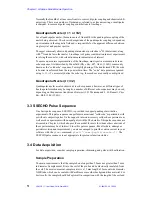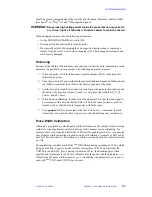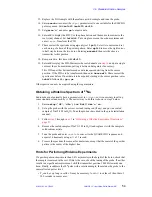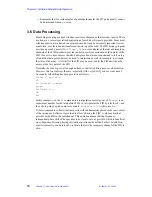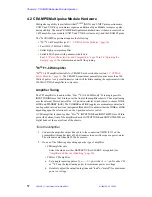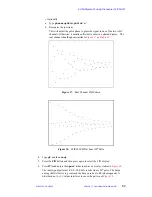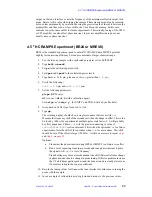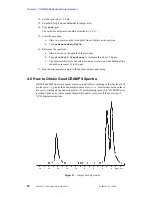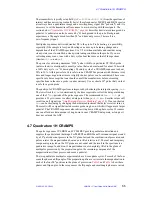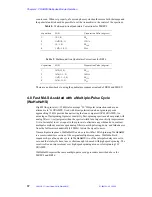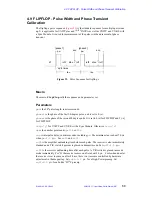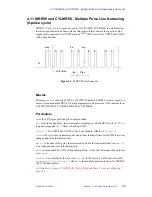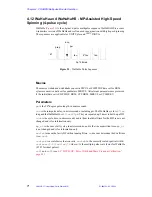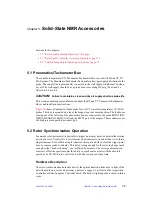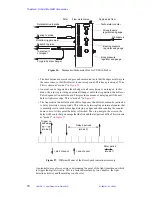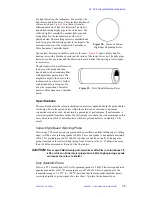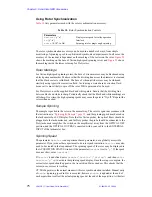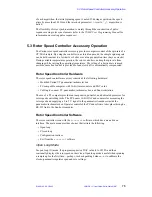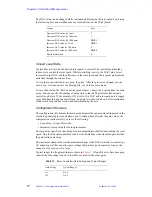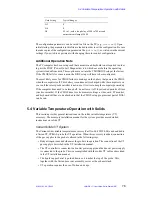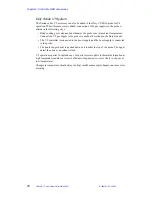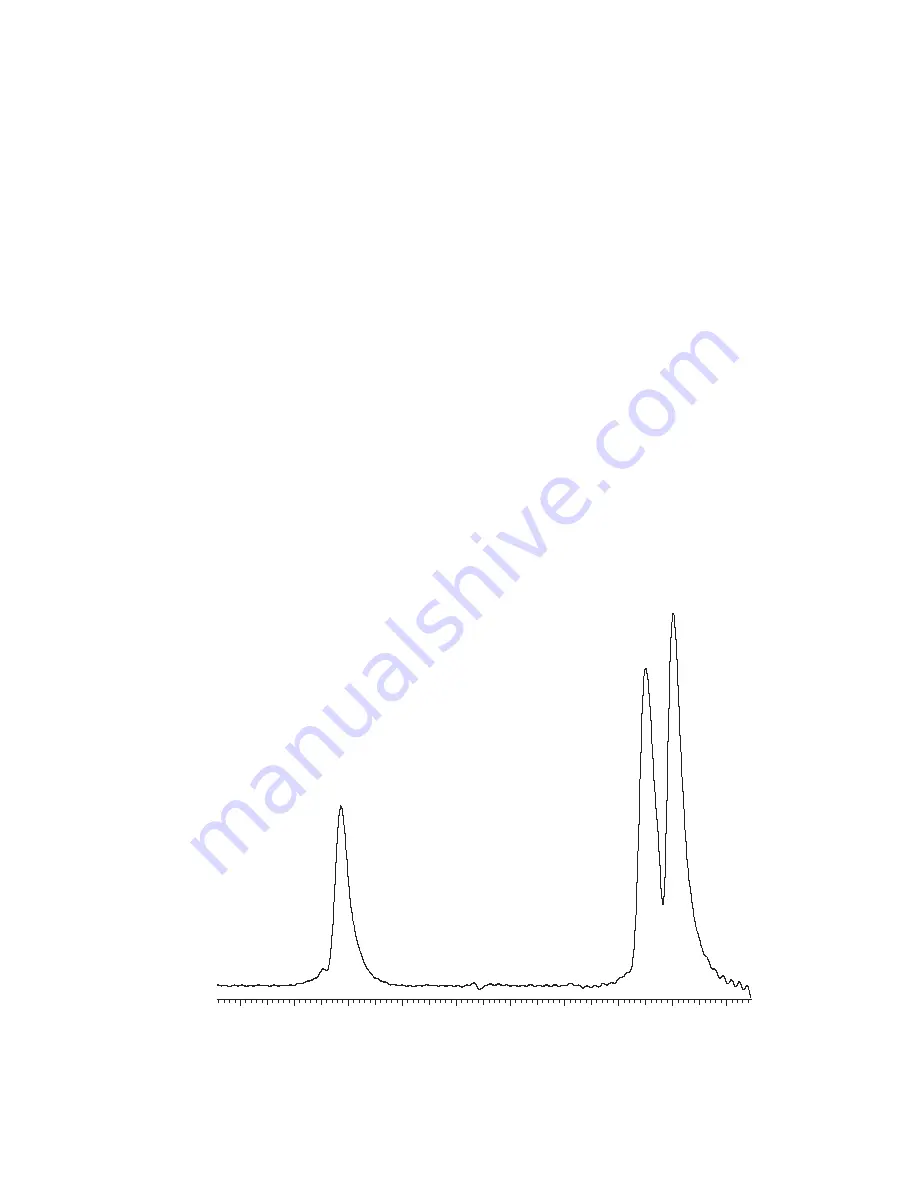
Chapter 4. CRAMPS/Multipulse Module Operation
65
VNMR 6.1C User Guide: Solid-State NMR
01-999162-00 C0402
12. Set the spin rate at < 2 kHz.
13. Set
d1=5
for glycine and
d1=60
for adipic acid.
14. Type
nt=2 ga
The result for adipic acid should be similar to
.
15. Scale the spectrum.
a.
Place two cursors on the two upfield lines of adipic acid or glycine.
b.
Type
scalesw=sfrq/delta
.
16. Reference the spectrum.
a.
Place a cursor on the upfield of the two lines
b.
Type
rl(sfrq*2.0/scalesw)
to reference this line at 2.0 ppm.
c.
The chemical shift scale and reference are now correct and an additional line
should be present at 13 to 14 ppm.
17. Run the experimental sample with the same data set and tuning.
4.6 How to Obtain Good CRAMPS Spectra
MREV8 and BR24 pulse sequences must be used with slow spinning so that the length of
a rotor cycle,
tr
, greater than one multiple-pulse cycle,
tauc
. Interference between these
two cycles will negate the narrowing effects. Typical spinning speeds for
1
H CRAMPS are
less than 2 kHz, and at these speeds the multiple-pulse cycle does all the narrowing of
1
H-
1
H dipolar interactions.
ppm (sc)
2
4
6
8
10
12
14
16
18
Figure 21. Adipic Acid Spectrum

